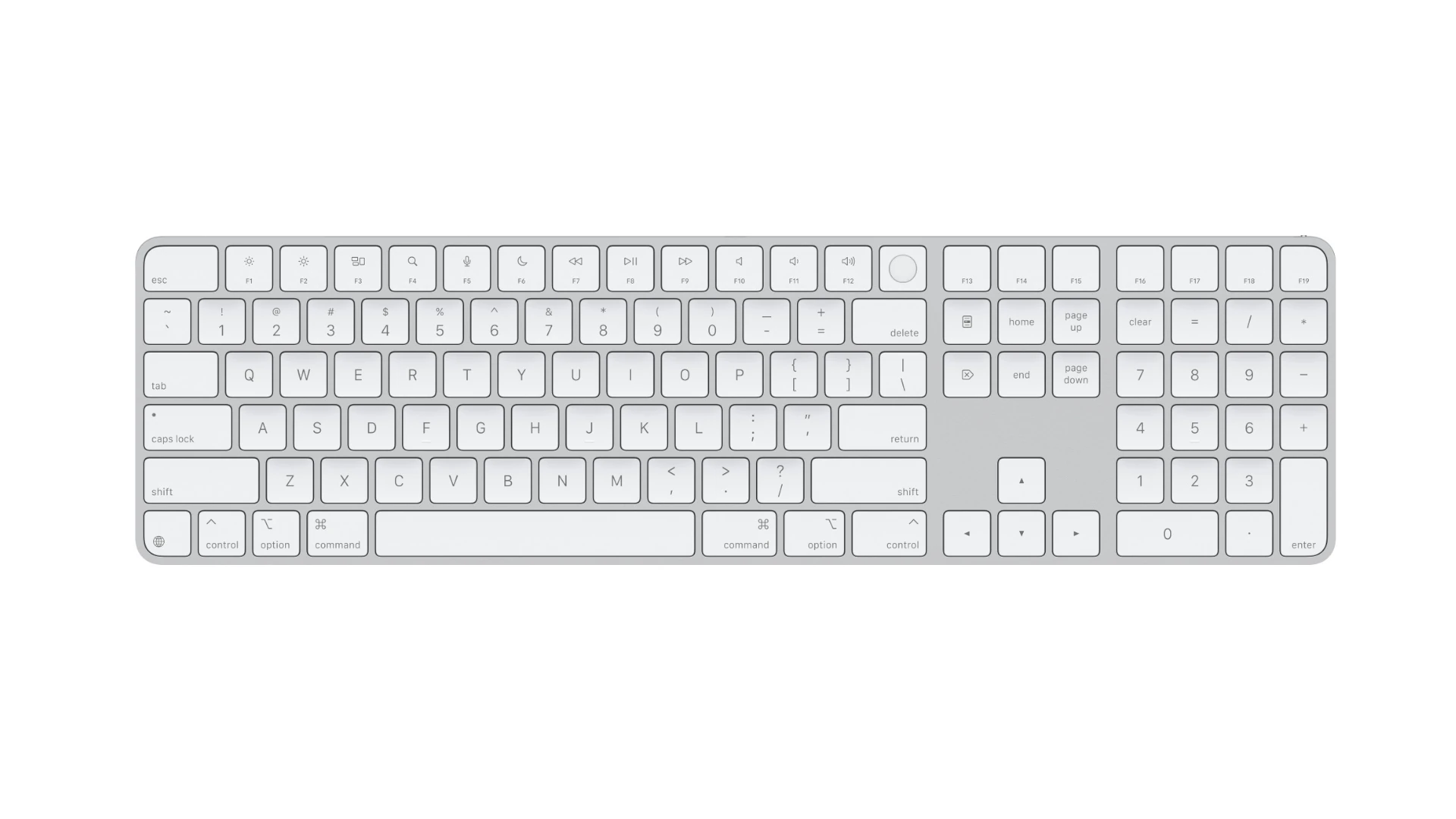A non-working Mac keyboard can disrupt your workflow and productivity. This common issue often stems from various causes, ranging from simple software glitches to hardware problems. To fix a Mac keyboard that’s not working, try restarting your computer, checking for system updates, and inspecting the physical connections.
If your Mac keyboard stops responding, don’t panic. Many solutions are quick and easy to implement. Start by checking your keyboard’s battery if it’s wireless. For wired keyboards, ensure the cable is securely plugged in. Sometimes, a simple restart can resolve software-related keyboard issues.
When basic troubleshooting doesn’t work, dive deeper into your Mac’s settings. Check your System Preferences for any conflicting accessibility settings or keyboard layouts. You might need to reset your Mac’s SMC or NVRAM if the problem persists. These steps often solve keyboard issues without the need for professional help.
| Common Causes | Quick Fixes |
|---|---|
| Low battery | Recharge or replace batteries |
| Software glitch | Restart Mac or update macOS |
| Dirty keyboard | Clean with compressed air |
| Connection issues | Check cable or re-pair Bluetooth |
| Hardware failure | Contact Apple Support |
Troubleshooting Your Mac Keyboard
Basic Checks and Easy Solutions
Sometimes, your Mac keyboard acts up for simple reasons. First, make sure it’s actually plugged in if it’s a wired keyboard. For wireless keyboards, check the power switch and make sure it has fresh batteries. A low battery can cause all sorts of weirdness. Also, try restarting your Mac. This often clears up minor software glitches that might be messing with your keyboard. It’s like a fresh start for your computer.
Software and Settings Tweaks
If a restart doesn’t do the trick, check your keyboard settings. Go to System Preferences and click on “Keyboard.” Make sure the settings look normal. For instance, check the key repeat rate. If it’s set too fast, it might seem like keys are sticking. Also, look at the “Modifier Keys” settings. Sometimes, these get accidentally changed, and it can make keys do unexpected things. If you recently installed new software, it might be interfering with your keyboard. Try uninstalling it to see if that helps.
Hardware Problems and Advanced Steps
If nothing else works, you might have a hardware problem. Try plugging your keyboard into a different USB port (if it’s wired) or connecting it to a different Mac (if it’s wireless). If it works on another Mac, the problem is probably with your computer, not the keyboard. If it doesn’t work anywhere, your keyboard might be broken. You could try cleaning your keyboard. Dust or crumbs can get stuck under the keys and cause problems. Compressed air works well for this. If you’re comfortable, you can also try resetting the PRAM/NVRAM. This can sometimes fix weird hardware issues. Just be careful and follow the instructions correctly.
Keyboard Troubleshooting Table
| Problem | Possible Solution |
|---|---|
| Keyboard not responding at all | Check connections, batteries, restart Mac |
| Keys sticking or repeating | Adjust key repeat rate, clean keyboard |
| Modifier keys not working correctly | Check Modifier Keys settings |
| Keyboard works on another Mac | Problem with your Mac, check software |
| Keyboard doesn’t work anywhere | Keyboard might be broken |
When to Call for Help
If you’ve tried everything and your keyboard still isn’t working, it’s time to get some help. If your Mac is still under warranty, contact Apple support. They might be able to fix it or replace it for free. If your warranty is up, you can take it to an authorized Apple repair shop. They can diagnose the problem and tell you how much it will cost to fix. You might also consider buying a new keyboard. Sometimes, it’s cheaper than getting an old one repaired.
Troubleshooting Common Keyboard Issues
When your Mac keyboard stops working, several quick fixes can often resolve the problem. These solutions range from simple hardware checks to adjusting system settings.
Checking Battery and Connections
For wireless keyboards, low battery power is a common culprit. Check the battery level of your Magic Keyboard or other Bluetooth keyboard. Replace batteries if needed.
Ensure your keyboard is properly connected. For wired keyboards, check the USB port connection. Try a different port if available.
With Bluetooth keyboards, re-pair the device. Go to System Settings > Bluetooth. Disconnect and forget the keyboard, then reconnect it.
If using a MacBook, verify the built-in keyboard is enabled. Sometimes, external keyboards can interfere with the laptop’s keyboard.
Cleaning and Inspection
Dirt and debris can cause keys to stick or become unresponsive. Clean your keyboard gently with a soft, dry cloth.
For stubborn dirt, use a can of compressed air. Spray at an angle to dislodge particles from under the keys.
Inspect individual keys for damage. If a key is stuck, carefully remove it to check the mechanism underneath.
Look for signs of liquid damage. If you suspect spills, let the keyboard dry completely before use.
System Settings and Accessibility
Check your Mac’s system settings for keyboard-related issues. Open System Settings > Keyboard.
Verify keyboard preferences like key repeat rate and delay until repeat are set correctly.
In Accessibility settings, ensure Slow Keys is turned off. This feature can make keys seem unresponsive.
Check for software conflicts. Boot your Mac in Safe Mode to see if the keyboard works properly without third-party software running.
Update macOS to the latest version. This can resolve keyboard driver issues.
| Issue | Quick Fix |
|---|---|
| Wireless keyboard not responding | Check/replace batteries |
| Keys sticking | Clean with compressed air |
| MacBook keyboard unresponsive | Verify no interference from external keyboards |
| Slow key response | Check Accessibility settings for Slow Keys |
Adjusting Software and System Preferences
Tweaking macOS settings can often resolve keyboard issues. These adjustments range from simple software updates to fine-tuning accessibility features.
Software Update Procedure
Keeping macOS current is crucial for keyboard functionality. Check for updates by clicking the Apple menu and selecting “System Settings.” Choose “General” then “Software Update.” If an update is available install it right away.
Restart your Mac after the update. This often fixes minor keyboard glitches. If problems persist try a clean install of macOS. Back up your data first using Time Machine.
For older Macs running an outdated OS consider upgrading to the latest compatible version. This can improve overall performance and fix keyboard-related bugs.
Modifier Keys Configuration
Customizing modifier keys can solve specific keyboard problems. Open “System Settings” and navigate to “Keyboard.” Click “Keyboard Shortcuts” then “Modifier Keys.”
Here you can reassign functions to different keys. This is helpful if certain modifier keys aren’t working properly. For example you might swap the Command and Option keys.
| Modifier Key | Default Function | Possible Reassignments |
|---|---|---|
| Caps Lock | Capitalize letters | Control, Option, Command |
| Control | Various shortcuts | Caps Lock, Option, Command |
| Option | Special characters | Caps Lock, Control, Command |
| Command | App commands | Caps Lock, Control, Option |
Test the new configuration thoroughly. If issues continue revert to default settings and explore other solutions.
Accessibility Features and Shortcuts
Accessibility settings can impact keyboard behavior. Open “System Settings” and select “Accessibility.” Then choose “Keyboard.”
Check if Slow Keys is enabled. This feature adds a delay between key presses. Turn it off if you’re experiencing lag. Adjust the delay if needed.
Sticky Keys is another setting to review. It allows pressing modifier keys one at a time for shortcuts. Disable it if keys seem to “stick.”
Enable “Use keyboard navigation to move focus between controls” for full keyboard access. This lets you navigate your Mac without a mouse.
Create custom shortcuts for frequent tasks. Go to “Keyboard Shortcuts” in System Settings. Add new shortcuts or modify existing ones to boost productivity.
Resolving Advanced Hardware or Software Problems
When basic troubleshooting fails to fix your Mac keyboard, advanced solutions may be necessary. These methods can address deeper system issues or serious hardware problems.
Resetting the SMC
Resetting the System Management Controller (SMC) can resolve keyboard issues on MacBooks. The SMC controls many hardware functions, including keyboard behavior.
To reset the SMC on a MacBook Pro:
- Shut down your Mac
- Hold Shift + Control + Option on the left side
- Press the power button for 10 seconds
- Release all keys
- Turn on your Mac
For Macs with T2 chips or Apple silicon:
- Shut down your Mac
- Hold the power button for 10 seconds
- Release and wait 5 seconds
- Turn on your Mac
This process often resolves stubborn keyboard problems.
Professional Diagnostics and Support
If resetting the SMC doesn’t work, seek professional help. Apple Stores and Authorized Service Providers have advanced diagnostic tools.
Book an appointment at an Apple Store or contact Apple Support online. They can:
- Run hardware tests
- Check for known issues (like butterfly keyboard problems)
- Perform repairs under warranty
- Offer replacement options
| Service Option | Pros | Cons |
|---|---|---|
| Apple Store | In-person support, quick diagnosis | May require appointments |
| Authorized Provider | Often closer locations | Might have longer wait times |
| Online Support | Convenient, no travel | Limited to software fixes |
Professional help ensures proper diagnosis and repair of complex keyboard issues.
Frequently Asked Questions
Mac keyboard issues can be frustrating. Here are solutions to common problems users face with their Mac keyboards.
How can I reset a Mac keyboard that is not working?
To reset a Mac keyboard:
- Unplug the keyboard if it’s wired
- Turn off Bluetooth if it’s wireless
- Restart your Mac
- Reconnect or re-pair your keyboard
This often resolves many keyboard issues.
What steps should I take if my MacBook keyboard is not working at the login screen?
If your keyboard isn’t responding at the login screen:
- Use an external keyboard to log in
- Check for system updates
- Reset the SMC (System Management Controller)
These steps can help restore keyboard functionality.
What could be the reason some keys on my MacBook Air keyboard are not functioning?
Possible reasons for non-functioning keys include:
- Dirt or debris under the keys
- Software conflicts
- Outdated macOS
Try cleaning the keyboard and updating your system to resolve these issues.
How do I unfreeze my Mac keyboard if it becomes unresponsive?
To unfreeze an unresponsive keyboard:
- Force quit any problematic apps
- Restart your Mac
- Check for software updates
- Disable problematic login items
These steps often resolve keyboard freezes.
Is there a way to fix a MacBook Pro keyboard that is not typing letters?
To fix a MacBook Pro keyboard not typing letters:
- Check keyboard settings
- Run Apple Diagnostics
- Clean the keyboard
- Consider visiting an Apple Store if issues persist
These steps can help restore letter typing functionality.
How do you unlock keyboard typing on a Mac when it is disabled?
To unlock disabled keyboard typing:
- Check Accessibility settings
- Disable Mouse Keys if enabled
- Turn off Slow Keys
- Reset NVRAM/PRAM
These actions can help re-enable keyboard typing on your Mac.
| Issue | Quick Fix |
|---|---|
| Unresponsive keys | Clean keyboard |
| Wireless connection problems | Re-pair keyboard |
| Software conflicts | Update macOS |
| Frozen keyboard | Restart Mac |
| Disabled typing | Check Accessibility settings |







